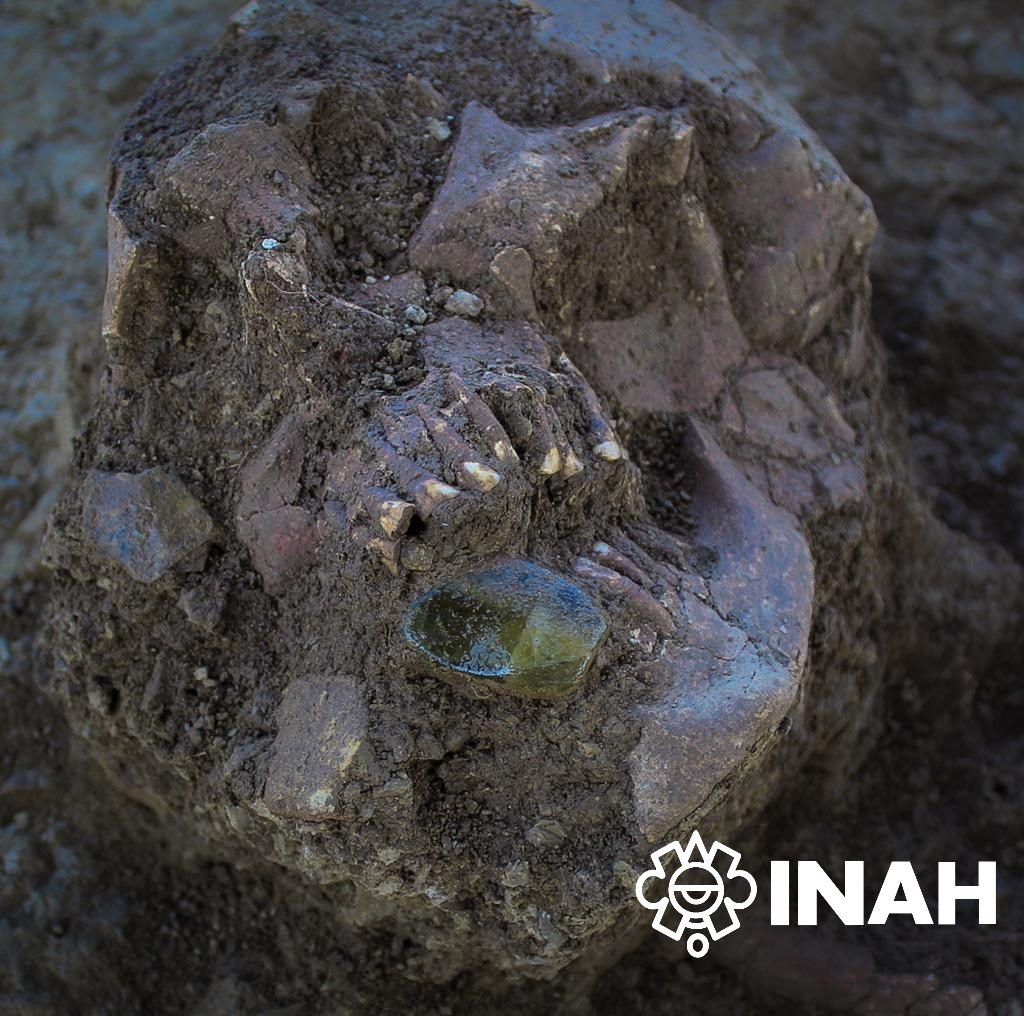More than a dozen human burials, complete with sophisticated jewelry and ornaments, have been uncovered by archaeologists working in the northeastern state of Tamaulipas, Mexico. Described by those working on the site as one of the most important local discoveries in recent decades, the excavation offers a glimpse into the ancient funerary practices of the pre-Columbian Huastec civilization.
Two large earthen mounds, supported by limestone and basalt masonry, have so far been identified and explored at the site, which is known as El Naranjo. The smaller of the two, Mound 4, measures 20 meters (66 feet) in diameter, and was home to the remains of three adult individuals – and they appear to have been sent off in style, complete with flowery earrings made from shell and green quartz, 5 by 6 centimeters (1.9 by 2.3 inches).
“The objects that accompanied them are rare materials in the region,” INAH Tamaulipas Center archaeologist and site coordinator Esteban Ávalos Beltrán told The Art Newspaper. “They were worked with great care and detail.”

Human remains found at the El Naranjo excavation site, showing a flower-shaped earring. Image credit: INAH
Mound 1, meanwhile, is larger – it has a diameter of 30 meters (98 feet) – and was found to contain burials in a range of styles. One of these, known as burial 4, was particularly noteworthy to the researchers: found inside a limestone mound, the burial is strikingly similar to those seen at Tamtoc – an archaeological site nearly 200 kilometers (124 miles) to the south, and one of the most important urban centers of the pre-Columbian Huasteca.
“We can see that they practised both single-individual and multiple-type burials,” Ávalos Beltrán noted. “And […] they were buried in different positions – some more frequent than others, such as the dorsal flexed position or the flexed decubitus position.”
But burials aren’t the only reason these mounds were created. It seems the site was also used for daily activities, the researchers believe: “Without a doubt, they were dynamic spaces,” Ávalos Beltrán said. “In addition to what is related to human burials, we propose that there were daily activities. This is based on the discovery of hearths, not very stylised ceramics, grinding stones and projectile points.”

Green quartz earrings, and the remains of the person who once wore them. Image credit: INAH
Located in a valley of of the Sierra Madre Oriental, between the Grutas de la Puente and the Cañón de La Servilleta, El Naranjo sits right in the center of what was once the Huastec civilization, Ávalos Beltrán explained in a statement. Based on the types of ceramics found – which fall into a style known as Zaquil black and red – as well as the style of construction, the team believe El Naranjo was likely in use towards the late phase of the Classic period, between 600 and 900 CE.
In fact, the construction of these mounds is something that has proved particularly intriguing for the team. Made from alternating layers of earth, limestone and basalt, it isn’t just notable for its quality – like the jewelry, it also hints at significant transport of material across the area, as well as the existence of specialized labor.
“[The discovery] allows us to characterise and know in-depth the construction systems of this type of earthen construction with stone masonry,” Ávalos Beltrán explained. “[These] have been little-studied from the architectural point of view.”
It’s a remarkable set of finds – and one that might easily have been lost, since the project was intended as salvage work accompanying the construction of a new Mante-Ocampo-Tula superhighway. With the impressive wealth of information gleaned from the mounds, archaeologists and physical anthropology experts now hope to shed new light on life in Huastec El Naranjo.
“We are expected to obtain accurate data about cultural affiliation, age, sex, nutrition and disease,” Ávalos Beltrán told The Art Newspaper.
“[The site] contributes to understanding social organisation, resource management and habitability solutions in response to the environment.”
Source Link: Shell And Green Quartz Flowers Found In 1,000-Year-Old Mexican Burial Site